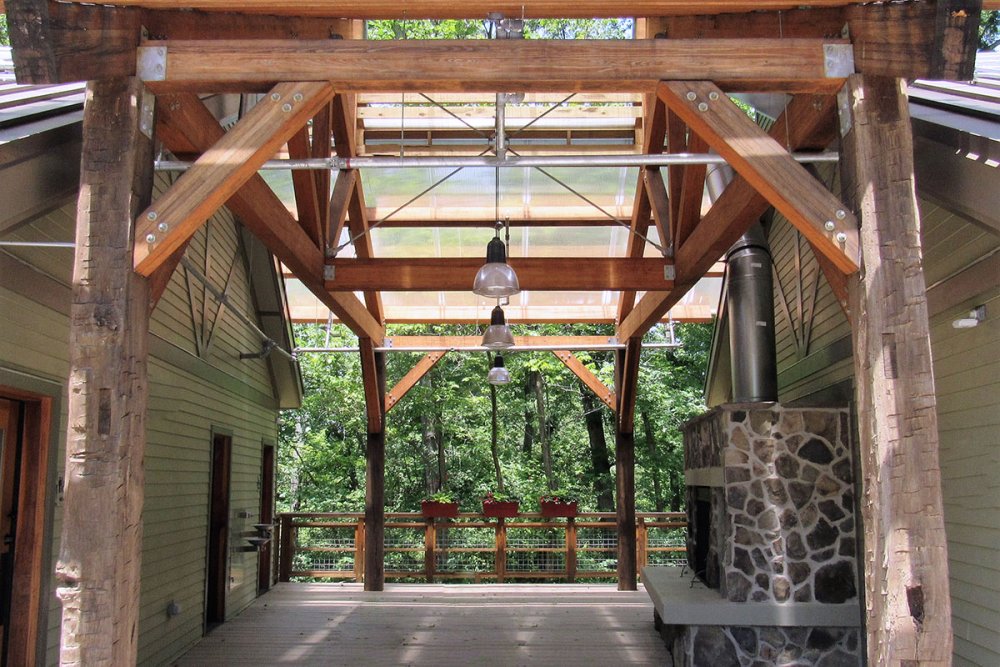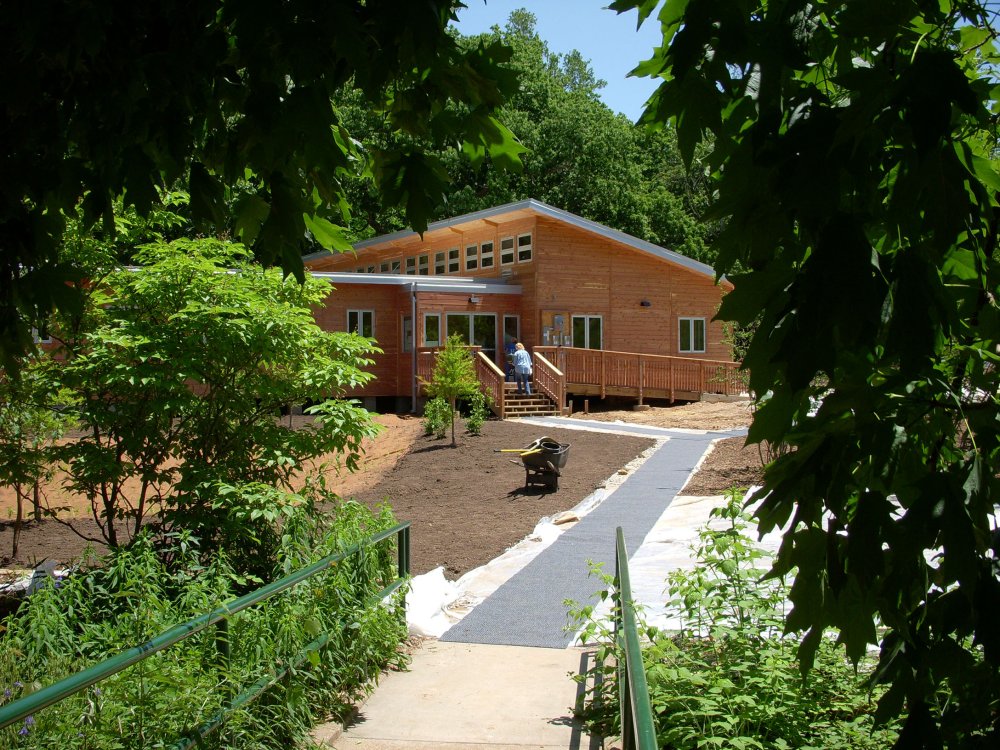THE MORRIS & GWENDOLYN CAFRITZ FOUNDATION ENVIRONMENTAL CENTER
Accokeek, Maryland, United States of America | Living Certified
The Morris & Gwendolyn Cafritz Foundation Environmental Center’s project team not only worked closely with manufacturers to identify Red List Compliant products, they also encouraged the manufacturers to sign up for Declare, so that future projects might benefit from their research and advocacy. For instance, the project team’s collaboration with Knauf Insulation yielded a notable success. Because Knauf had previously reformulated all of its fiberglass insulation to use a formaldehyde-free, bio-based binder, the project team contacted them early in the design process to inquire if their product was Red List–free. This inquiry prompted Knauf’s sustainability team to conduct an in-depth analysis of its products, and subsequently to list its entire fiberglass insulation product line in the Declare database so these products can easily be sourced for future LBC projects. Knauf is now working to eliminate Red List ingredients from all of its products, and is also using this opportunity to improve other critical environmental attributes across its product lines. Knauf is also lobbying state legislatures to establish glass bottle recycling programs to serve as a sustainable recycled material feedstock for its fiberglass insulation.
 In addition to their success with Knauf, the project team also worked hard to ensure that the wood used on the project was FSC-certified or salvaged. The project’s structural engineer, CVM, called for Southern Yellow Pine framing and sheathing to meet performance and aesthetic criteria. Responsible sourcing of the wood required research and advocacy. Image Courtesy of RE:Vision Architecture.
In addition to their success with Knauf, the project team also worked hard to ensure that the wood used on the project was FSC-certified or salvaged. The project’s structural engineer, CVM, called for Southern Yellow Pine framing and sheathing to meet performance and aesthetic criteria. Responsible sourcing of the wood required research and advocacy. Image Courtesy of RE:Vision Architecture. TYSON LIVING LEARNING CENTER
Eureka, Missouri, United States of America | Living Certified
The Living Learning Center (LLC) is located in the Tyson Research Center, a 2,000-acre forested property that also contains an environmental field station for Washington University in St. Louis, Missouri. In keeping with the LLC’s broader research and teaching mission of ecological sustainability, the project team decided to sustainably harvest lumber from within the Tyson property itself. The oak, walnut, and ash used on the project came from storm-downed or dead trees harvested near roads to minimize disturbance to the ecosystem. Both the eastern red cedar used for the siding and the hard maple laid for the flooring are able to grow in shallow soils only when fire has been suppressed, as it has been for decades at the Tyson Research Center. These species are therefore considered invasive, and were already slated for removal as part of a restoration plan to improve the ecology of the property. This harvesting strategy, which aligns well with the regenerative principles of the Living Building Challenge, prompted the LBC team to create an Exception (Exception MT-002, Invasive Species) allowing the intentional on-site harvest of invasive trees in order to restore damaged ecosystems.
 The Living Learning Center serves as a community space for education. 100% of the wood used on the project is either intentionally harvested on-site or Forest Stewardship Council (FSC) certified. Image by Joe Angeles.
The Living Learning Center serves as a community space for education. 100% of the wood used on the project is either intentionally harvested on-site or Forest Stewardship Council (FSC) certified. Image by Joe Angeles.


